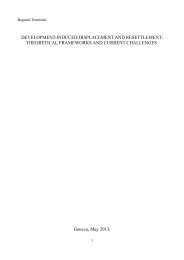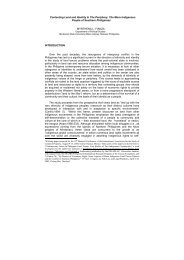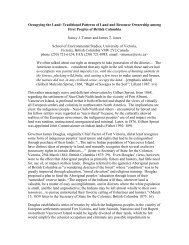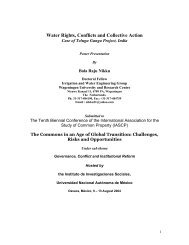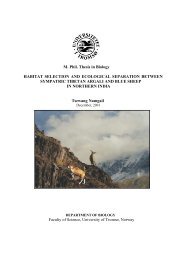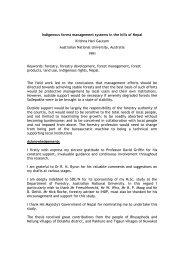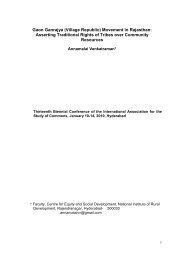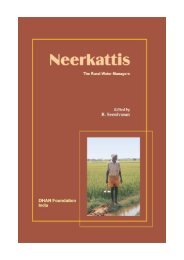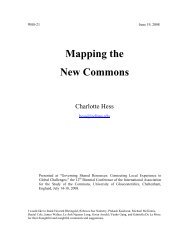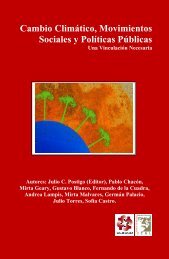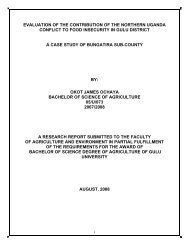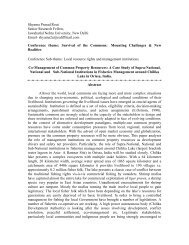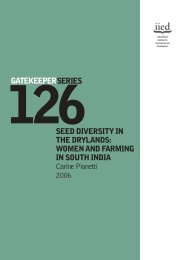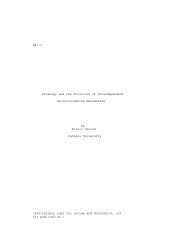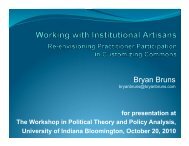Legal empowerment for local resource control
Legal empowerment for local resource control
Legal empowerment for local resource control
You also want an ePaper? Increase the reach of your titles
YUMPU automatically turns print PDFs into web optimized ePapers that Google loves.
3.3. TOOLS TO MINIMISE AND COMPENSATE<br />
NEGATIVE IMPACTS ON LOCAL RESOURCE RIGHTS<br />
3.3.1. Introduction<br />
Large-scale investment projects may be associated with the taking or<br />
compression of <strong>local</strong> <strong>resource</strong> rights, and with environmental pollution<br />
and damage to property (e.g. soil and water pollution). There<strong>for</strong>e,<br />
another set of legal tools to secure <strong>local</strong> <strong>resource</strong> rights concerns<br />
tightening requirements <strong>for</strong> minimising, mitigating and compensating<br />
land takings and environmental damage suffered by <strong>local</strong> <strong>resource</strong> users.<br />
This includes requiring a social impact assessment be<strong>for</strong>e approving the<br />
investment project; tightening rules on compensation <strong>for</strong> taking of<br />
property; and establishing effective remedies <strong>for</strong> damage to property<br />
(from injunctions to compensation). In this area, access to courts to<br />
challenge government action or to seek redress <strong>for</strong> damage suffered is<br />
particularly important – as exemplified by the Botswana case Sesana,<br />
Setlhobogwa and Others v. Attorney General (see below).<br />
3.3.2. Social impact assessment<br />
“Social Impact Assessment” (SIA) aims to assess the likely impacts of a<br />
proposed project on <strong>local</strong> <strong>resource</strong> rights be<strong>for</strong>e the project is approved, and<br />
to design strategies that can help minimise and/or mitigate these impacts.<br />
SIAs first emerged in the US in the 1970s, and have since been applied to<br />
developing country contexts – particularly as part of the requirements of the<br />
World Bank and of other funding agencies. SIA has developed in association<br />
with, and often within the broader context of Environmental Impact<br />
Assessment (EIA; in some cases, assessments of both environmental and<br />
social impacts are termed “Environmental and Social Impact Assessment”).<br />
However, while there has been growing experience with and expertise in EIA,<br />
SIA methodologies remain less established (Barrow, 2000) – although the past<br />
few years have witnessed growing experience with this tool.<br />
SIAs generally involve the identification of the actors potentially affected by<br />
the proposed project; the <strong>for</strong>mulation of alternative project designs; the<br />
determination of their respective potential impacts on the identified actors,<br />
and of the magnitude of such impacts; the analysis of trade-offs; the design<br />
of mitigation measures; monitoring during project implementation; and ex-<br />
85



